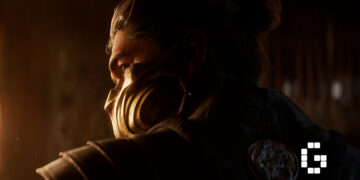The legendary samurai action-adventure that captivated PlayStation 2 owners two decades ago is making a triumphant return with enhanced visuals and modernized gameplay. In this preview of Onimusha 2: Samurai’s Destiny, we’ll explore how this beloved classic has been carefully updated while preserving its distinctive identity, examining everything from its visual overhaul to quality-of-life changes that make the experience more accessible for today’s audiences.
Onimusha 2: Samurai’s Destiny bridges the gap between nostalgia and contemporary gaming expectations, offering both veterans and newcomers a chance to experience this iconic title with significant improvements.
Gameplay Experience and Visual Enhancements
The main story of Onimusha 2: Samurai’s Destiny can be completed in approximately 8 hours, with additional time spent exploring new features and mini-games bringing the total play time to around 10 hours. The remaster offers a more accessible way to experience this classic title, which originally released in 2002 exclusively for PS2 and only in English and Japanese. Now, the game supports multiple languages including simplified and traditional Chinese, though voice acting remains limited to English and Japanese.

One of the most significant improvements in the remaster is the visual upgrade. All assets have been updated to high definition, including 3D character models, visual effects, CG cutscenes, background environments, user interface elements, and text fonts. The game now features a cleaner, more modern look while retaining its distinctive art style. For purists who prefer the original experience, the remaster includes an option to switch between 16:9 and 4:3 aspect ratios during gameplay. Some camera angle issues from the original remain, such as enemies occasionally blocking the view or moving out of frame, but these quirks are part of the game’s historical identity.

The remaster also pays tribute to one of Japan’s legendary actors, Yusaku Matsuda, by bringing his character model to life in high definition. Additional character customization options are available from the start, including a special costume that was previously only unlockable after completing the final dungeon in the original game.
Character Relationships and Revamped Battle System
The game features four supporting characters who develop relationships with the protagonist throughout the journey. As these bonds grow stronger, they unlock new events, and player choices and gifts can lead to different story branches. With approximately 100 unique events to experience, replay value is substantial.
The remaster enhances this aspect by adding the ability to skip cutscenes, making it easier for returning players to focus on reaching branching narrative points when replaying. This feature, combined with the option to set the difficulty to Easy, streamlines the process of achieving 100% character progression and experiencing all character storylines.

Several updates have been made to the battle system, beginning with difficulty selection. Unlike the original, where Easy mode only unlocked after dying multiple times, players can now choose their preferred difficulty level from the start. Options range from Easy to Normal, Hard, Critical (一闪) which requires perfectly timed critical strikes, and the new brutally challenging Hell (修罗) mode where every enemy hit is a one-hit kill.
An auto-save feature has been implemented to balance these difficulty options, allowing players to load from recent checkpoints upon death. This is particularly useful during boss battles, eliminating the need to backtrack from distant save points as was required in the original version.

Combat has been made more fluid with the addition of weapon-swapping shortcuts. By holding L2 and pressing directional buttons, players can quickly cycle through their arsenal of four melee weapons or switch to ranged weapons. This represents a significant improvement over the original’s menu-based weapon selection system, making combat feel smoother and more responsive.
Expanded Mini-Games and Accessibility
The remaster makes all mini-games available from the beginning, rather than requiring completion of the main story first. There are three distinct mini-games. The Men in Black (黑色西装男子) has players take on the appearance of Yusaku Matsuda’s character from a 1998 film, attempting to escape the village within 5 minutes without killing enemies. Success rewards players with unique cutscenes featuring Jubei in a suit.
Team Oni (鬼组) offers a roguelike experience where players can switch between unlocked characters from the main story while battling through stages. Health gradually depletes during combat, adding urgency to each encounter.
Puzzle Phantom Realm (解谜幻梦空间) expands on the treasure chest puzzles from the main game, offering additional challenges that unlock artwork upon completion.

The remaster provides immediate access to a gallery and soundtrack collection without requiring progression-based unlocks. Players can browse concept art and listen to music from the start. The gallery includes upgraded high-resolution artwork from the original game with new zoom functionality, plus over 100 new special artworks including exclusive pieces from master illustrator Keita Amemiya. The complete 43-track original soundtrack is also available for listening.
Conclusion
Onimusha 2: Samurai’s Destiny Remastered represents a thoughtful modernization of a classic title. With significant visual improvements, quality-of-life enhancements, and additional content, the remaster offers both a nostalgic experience for returning fans and an accessible entry point for newcomers. While maintaining the core gameplay and narrative that made the original beloved, the new features address many of the limitations of the PS2 era design. Whether you’re interested in experiencing the story, testing your skills in the new Hell difficulty, or exploring the expanded mini-games, this remaster breathes new life into a gaming classic from the early 2000s.










![[EXCLUSIVE] Inside Japan’s Indie Game Revolution – An Interview with BitSummit Organizer Masahiko Murakami](https://cdn.gamerbraves.com/2025/05/BitSummit-Orgainzer_Interview_FI-360x180.jpg)
![[EXCLUSIVE] The Art of Adaptation: Developer Interview Details the OVERLORD Mobile RPG Lord of Nazarick](https://cdn.gamerbraves.com/2025/05/Lord-of-Nazarick_Interview_FI-360x180.jpg)
![[EXCLUSIVE] Taking Gundam in Bold New Directions – Interview with GQuuuuuuX Director Kazuya Tsurumaki](https://cdn.gamerbraves.com/2025/04/Kazuya-Tsurumaki_Interview_FI-1-360x180.jpg)


![[SEA Exclusive] From Shadows to Shipwrecks – Jennifer English Talks About Bringing Emotional Depth to Clair Obscur: Expedition 33](https://cdn.gamerbraves.com/2025/04/Clair-Obscur-Jennifer-English_Interview_FI-360x180.jpg)

![[EXCLUSIVE] Do the Game Interview – An Intimate Look at the Challenges of Game Development](https://cdn.gamerbraves.com/2025/04/Do-the-Game_Interview_FI-1-360x180.jpg)
![[EXCLUSIVE] Interview with the Minds Behind of Den of Wolves – 10 Chambers’ New Sci-Fi Heist FPS](https://cdn.gamerbraves.com/2025/04/Den-of-Wolves_Interview_FI-360x180.jpg)










![[GUIDE] SD Gundam G Generation Eternal Unit Tier List](https://cdn.gamerbraves.com/2025/04/SD-Gundam-G-Generation-Eternal-Tier-List_Review_FI-360x180.jpg)